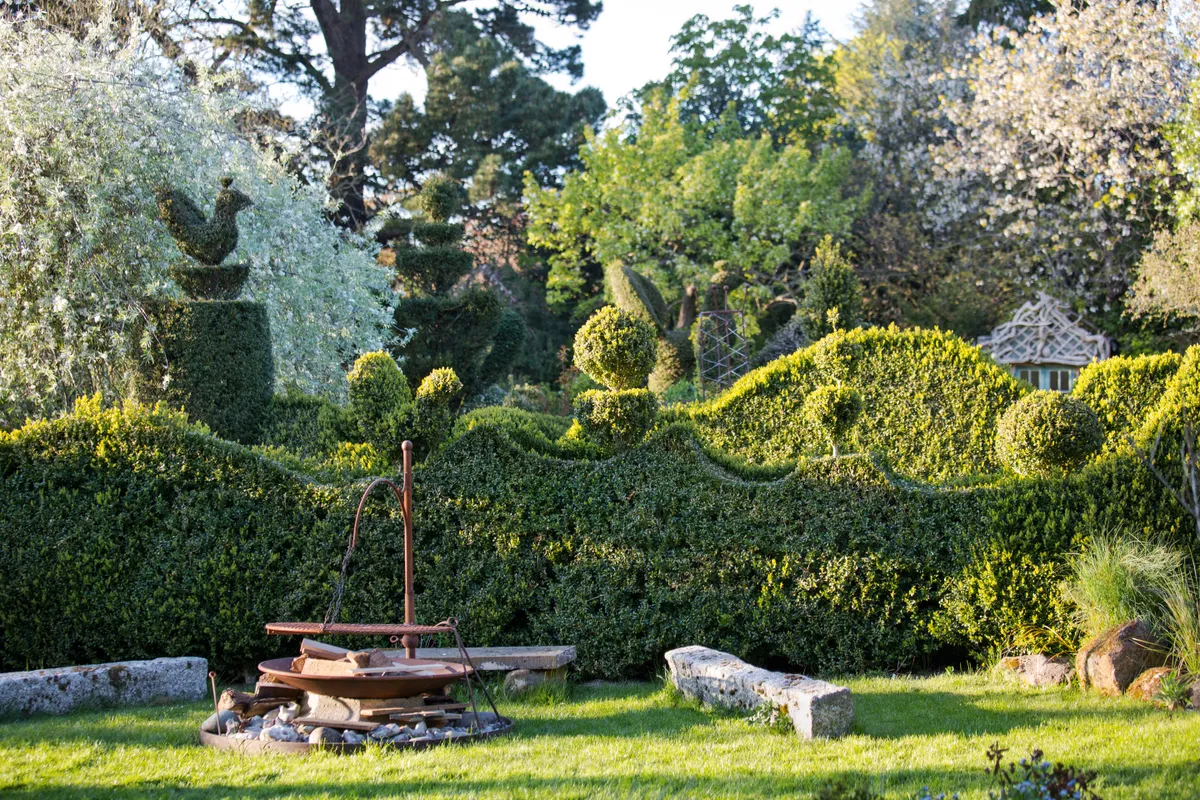Nature loss is a huge topic at the moment, and if you're thinking of redesigning or refreshing your garden, it is always worth making sure you're making changes that will benefit wildlife. So whether you’re planning a new garden, thinking of redesigning an old one, or just looking for a few new ideas, here are a few things to think about.
How to avoid losing nature from your garden design
Wildflower meadows are in, but are they realistic?

For many gardeners, wildlife gardening and growing a wildflower meadow are almost synonymous. But on a normal fertile garden soil, making a convincing wildflower meadow is hard work. Some long grass is great for all kinds of wildlife, but don’t lose too much sleep if your meadow is long on grass and short on flowers.
Do boxes for wildlife really do the trick?

A very mixed bunch. Some, such as bird boxes and solitary bee hotels, work a treat. Others, such as hedgehog boxes and nest boxes for bumblebees, are a waste of time and money. In fact the best thing you can do for hedgehogs is …..
Get rid of your fence and plant a hedge

If you’ve any choice in what divides you from your neighbours, nothing is better for wildlife than a hedge – a terrific habitat in its own right and also completely porous, allowing free movement between adjacent gardens. If your garden has a fence, make a hedgehog-sized hole in it – now!
Here's more on hedges
Don't worry about making a space for nettles

Caterpillars of a few common butterflies eat nettles, but nettles are one of Britain’s commonest plants already, and there’s absolutely no evidence that planting more does the butterflies that eat them any good at all.
Definitely don't invest in paving

Key resources for wildlife are soil, plants and water, none of which are provided by paving. In fact, it’s hard to think of anything worse for wildlife. So, although it’s hard to enjoy your garden without some paving, keep it to a minimum.
Compost is a no-brainer, just don't bother turning it

An RHS survey reveals that only a third of gardeners compost their garden waste. But home-made compost is free, almost effortless to make, and helps to feed both your plants and all the unseen but vital life in your soil. Just remember – whatever anyone else tells you, compost heaps do not need turning.
Here's the best compost for potting
15 of the best compost bins to buy
Make sure you have water for mammals and birds

If we’re having another long hot summer (or even if we’re not), ensure your garden provides water for birds and mammals to bathe and drink. If you don’t have a pond, at least provide a shallow bird bath, and take care that it’s kept both clean and topped up.
If you can provide a pond, however small, dragonflies are almost sure to turn up, but the mature nymphs need emergent vegetation to climb up, so they will only lay eggs if your pond has the right plants. Sweet flag (Acorus), irises, flowering rush (Butomus umbellatus) and reedmace (Typha spp.) are all good choices.
Here's our guide to saving water in the garden
Plant up so you have flowers in winter

Late winter and early spring is a perilous time for bumblebees as they start to establish new nests. The first cohort of workers are small, which means they can’t fly far and, if there’s a cold snap, aren’t good at coping with low temperatures either. So gardeners should make sure there are lots of bee-friendly flowers in winter and early spring: for example Christmas box, mahonia, winter honeysuckle, willow, Clematis cirrhosa, crocus, hellebores, lungwort (Pulmonaria spp.), primrose and rosemary.
Squeeze in a tree

Space doesn’t allow me to list all the good things that trees do for both you and the environment, so every garden, however small, should try to squeeze in at least one. If you’ve only room for one small tree, my personal recommendation is a Victoria plum; great for spring pollinators, nothing beats your own plums fresh from the tree, and don’t get me started on plum crumble.
Here's How to plant a tree
Make room for herbs

Quite apart from being a scented and culinary delight, few things are more pollinator-friendly than a herb garden. The mint family, including lavender, sage, basil, rosemary, marjoram, thyme and mint itself, are all bee magnets. Chives are hard to beat too, while anything in the carrot family (fennel, dill, parsley, coriander and chervil) is terrific for hoverflies.
Here's more on how to attract wildlife in your garden